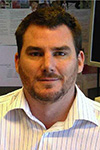Mesozoic rift onset and its impact on the sequence stratigraphic architecture of the Northern Carnarvon Basin
Anthony Gartrell A , Jose Torres B , Matt Dixon B and Myra Keep CA RISC Advisory
B Shell Australia
C The University of Western Australia
The APPEA Journal 56(1) 143-158 https://doi.org/10.1071/AJ15012
Published: 2016
Abstract
Ages varying from Late Triassic to Early Jurassic have been proposed by different authors for the onset of rifting in the Northern Carnarvon Basin. Seismic sections from the Exmouth Sub-basin and outer Exmouth Plateau demonstrate significant growth strata associated with displacement on normal faults starting at least at the base of the R. rhaetica zone (Rhaetian). This tectonic event coincides with a marked change in sequence architecture and a large landward shift (~300 km) of the paleo-shoreline to the vicinity of the Rankin and Alpha Arch trends. Rapid creation of accommodation in the inboard narrow rift basins (Exmouth, Barrow and Dampier sub-basins) is suggested to be the most likely cause of this major transgression. The preferential development of associated carbonate build-ups during the Rhaetian on the footwall side of active tilted fault blocks provides additional evidence for the onset of significant extensional faulting occurring during this time. An earlier more subtle initiation phase of rifting, however, is interpreted during the Norian, from around the middle part of the H. balmei biozone time, above which a change in stratigraphic architecture from aggrading to retrograding occurs. The observed structural and stratigraphic transitions can be related to typical phases of evolution described in many rift basins around the world. The work highlights the importance of integrating regional structural geology, sequence stratigraphy and depositional systems observations to provide robust constraints for basin evolutions.

Anthony Gartrell obtained his degree in geology and geophysics from the University of Western Australia (UWA) in 1993. He then worked in WMC Resources’ petroleum division in 1995. After completing his PhD in geology and geophysics at UWA he joined CSIRO’s petroleum division in 2000 where his work focused on the effects of fault reactivation on fault seal and trap integrity. Anthony then joined Shell, working in Brunei (2007) and then Australia (2011), where he played a lead role in major regional and play based exploration projects. Since 2013 he has been working as a consultant specialising in structural geology, sequence stratigraphy and play based exploration. Presently, Anthony is also an Adjunct Senior Research Fellow at UWA. Anthony. Gartrell@riscadvisory.com |

Jose Torres obtained a degree in geology from the University of Barcelona (Spain), a MSc in the French Institute of Petroleum of Paris, and a PhD in marine geology from the University of Barcelona in 1995. He worked for Repsol for almost nine years, with different assignments in Spain, South America and the US, mostly in new ventures. He joined Shell in 2007 in Brunei, working as a regional geologist and sedimentologist. He moved to Shell Australia in 2012 with a similar role where he has been involved in several regional studies covering the totality of the North West Shelf. jose.torres-escamez@shell.com |

Matt Dixon studied at UWA, and then was a consultant palynologist with Morgan Goodall Palaeo for six years, specialising in the Cretaceous to Triassic of northwest Australia to PNG (more than 70 wells). For the later four years of this time, he worked concurrently as a biostratigrapher for Shell Australia. Since 2013 he has been an explorer/ stratigrapher with Shell Australia, where he works in the Regional Team. matt.dixon@shell.com |

Myra Keep is Professor of Structural Geology and Tectonics at UWA. Her research interests include reactivation and inversion of fault systems, dynamics of collisional margins, neotectonics, and seismicity. She has worked extensively on reactivated systems on the North Wets Shelf, and since 2003 has also had an active research program in Timor-Leste. Myra holds degrees from London (BSc, University College London), Vancouver (MSc, University of British Columbia) and Texas (PhD). After leaving Mobil in 1995 she worked at Royal Holloway University of London and the University of Aberdeen before commencing at UWA in 1997. She is a recipient of a WA Premier’s Science prize, being named Science Ambassador of the Year 2013–14. myra.keep@uwa.edu.au |


